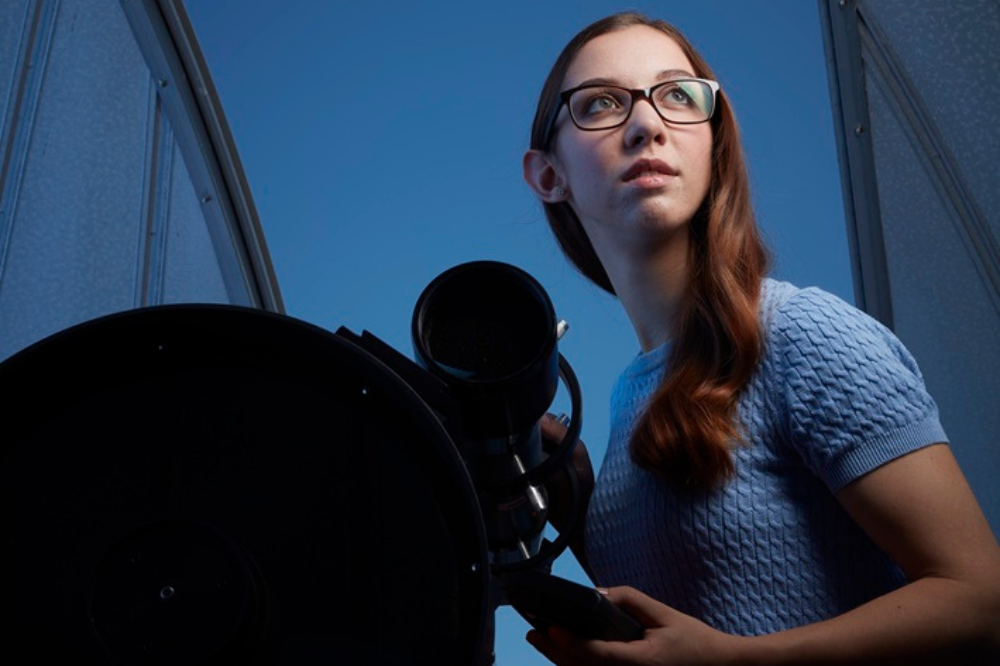
A groundbreaking national competition is giving young Australians the chance to use their STEM skills to tackle real-world problems they care about.
The announcement of the ‘Solve for Tomorrow STEM competition’ for young Australian innovators – launched by Samsung Electronics Australia – coincides with new research shows young Australians, often seen as a vocal generation, feel significantly disempowered in their ability to create meaningful change.
While 83% believe STEM is key to positive change, only 25% feel confident in their STEM skills. The researchers note a lack of resources and support being a significant barrier, with nearly half citing it as a major hurdle.
The study highlights that upskilling young Australians in STEM education is crucial to empower them to turn their innovative ideas into reality.
Below, The Educator speaks to Dr Kirsten Banks, an Astrophysicist, STEM advocate and Samsung Solve for Tomorrow 2024 spokesperson, about the challenges and opportunities inherent in Australia’s current STEM education landscape, and how schools can empower students turn their ideas into action.
TE: How would you describe the STEM education landscape in Australia in 2024 in terms of how well/poorly it is equipping young people with the knowledge and skills necessary to gain and sustain employment in this critical industry?
The STEM education landscape in Australia has seen significant progress in recent years, with a greater emphasis on interdisciplinary learning and hands-on experience. Schools increasingly recognise the importance of STEM in preparing students for their future careers. However, there are still gaps, particularly in rural and remote areas where access to resources and opportunities can be limited. While many schools are now integrating coding, robotics, and other STEM-related activities into their curricula—which is fantastic (I wish I had that in school)—there is still a need for more industry partnerships, mentorship programs, and real-world applications to bridge the gap between classroom learning and the skills needed for future careers. Overall, while progress is being made, there is still a lot of work to be done to ensure that all young Australians are fully equipped with the knowledge and skills needed to thrive in the STEM industry.
TE: The survey found a disconnect between young Australians, often seen as the vocal generation, feeling disempowered in their ability to create meaningful change. What do you believe could be some of the contributing factors driving this?
Several factors could be contributing to this sense of disempowerment among young Australians. Firstly, the sheer scale of global challenges, such as climate change, economic inequality, and social justice issues, can be incredibly overwhelming. Despite being vocal and passionate, many young people feel that their individual efforts are insignificant in the face of such massive problems. Without access to the right tools, platforms, and support networks, young people may struggle to see how they can turn their ideas into action. Finally, we see that young people feel a lack of representation and visibility of their voices in decision-making processes, leading to feelings of frustration and helplessness.
TE: Drawing from your experience, what tools, skills, and resources do young Australians need to be able to speak out and turn their ideas into actions to create positive societal change?
From my experience, a combination of practical skills, access to resources, and support networks is crucial to turning ideas into action. Critical thinking and problem-solving skills are essential, as they enable young people to analyse complex issues and develop innovative solutions. Additionally, digital literacy is crucial, especially given the prevalence of online misinformation. It enables us to effectively communicate our ideas, mobilize support, and engage with a wider audience, while also equipping us to identify and prevent the spread of misinformation. Access to mentorship programs and networks that connect young people with industry professionals, policymakers, and community leaders can also provide invaluable guidance and opportunities. Finally, providing platforms for young voices to be heard, such as youth councils or social media campaigns, can empower them to speak out and create meaningful change.
TE: What are the most powerful ways in which the Solve for Tomorrow STEM competition will offer innovative young Australians the opportunity to use STEM to tackle issues that matter most to them?
Samsung’s Solve for Tomorrow STEM competition offers young Australians a unique opportunity to apply their STEM skills to real-world problems that they are passionate about. By encouraging participants to identify issues that matter to them, the competition fosters a sense of ownership and empowerment. The competition also provides a platform for young innovators to showcase their ideas, receive feedback from experts, and gain recognition for their efforts alongside the crucial financial support to make their solutions a reality. Additionally, the competition emphasises the importance of collaboration, allowing participants to work in teams, learn from one another, and develop their ideas further. By offering mentorship, resources, and exposure to industry professionals, Solve for Tomorrow helps young Australians turn their ideas into tangible solutions, paving the way for future careers in STEM and beyond. I am so honoured to be the ambassador for the Solve for Tomorrow 2024 competition.


